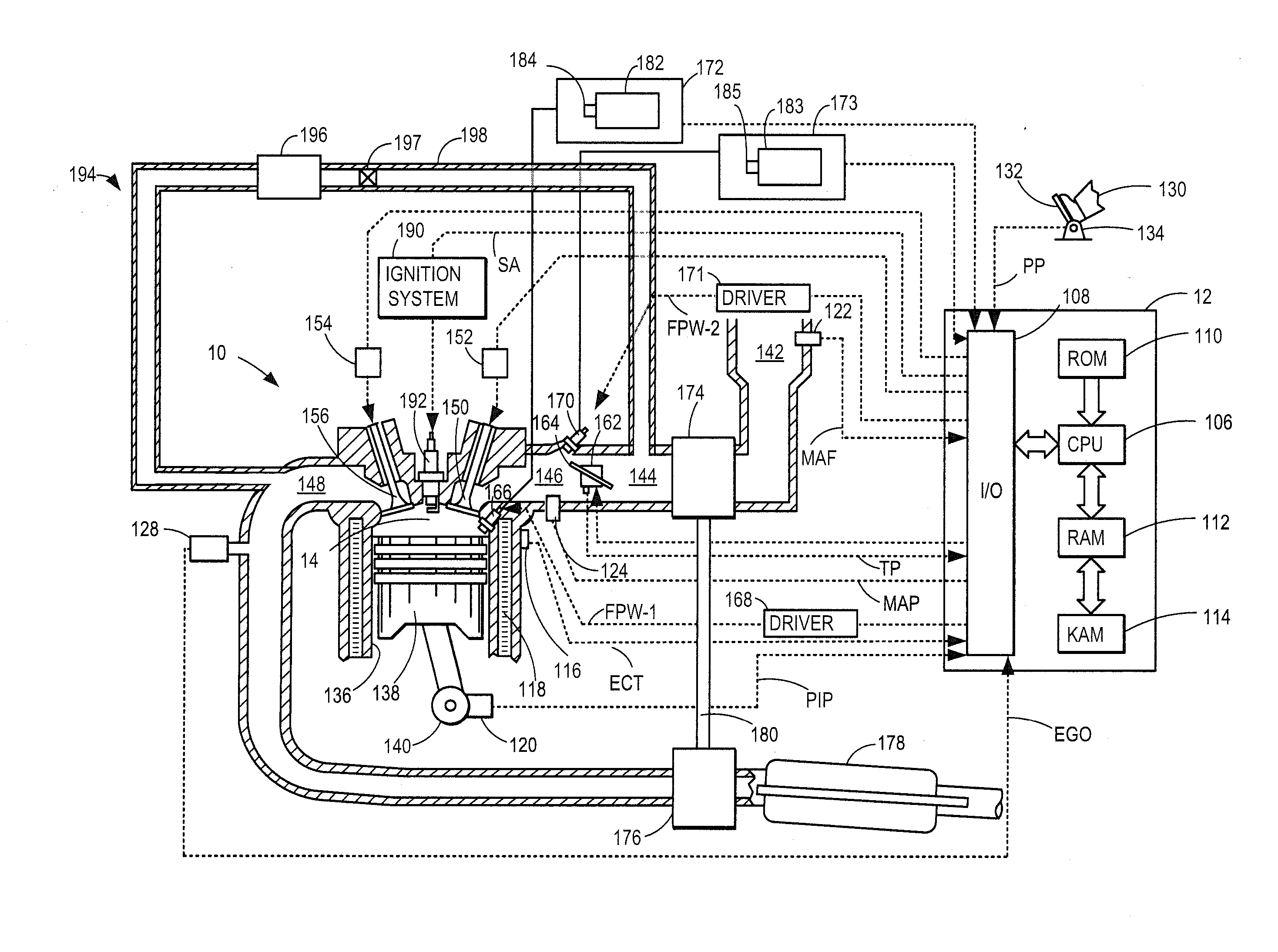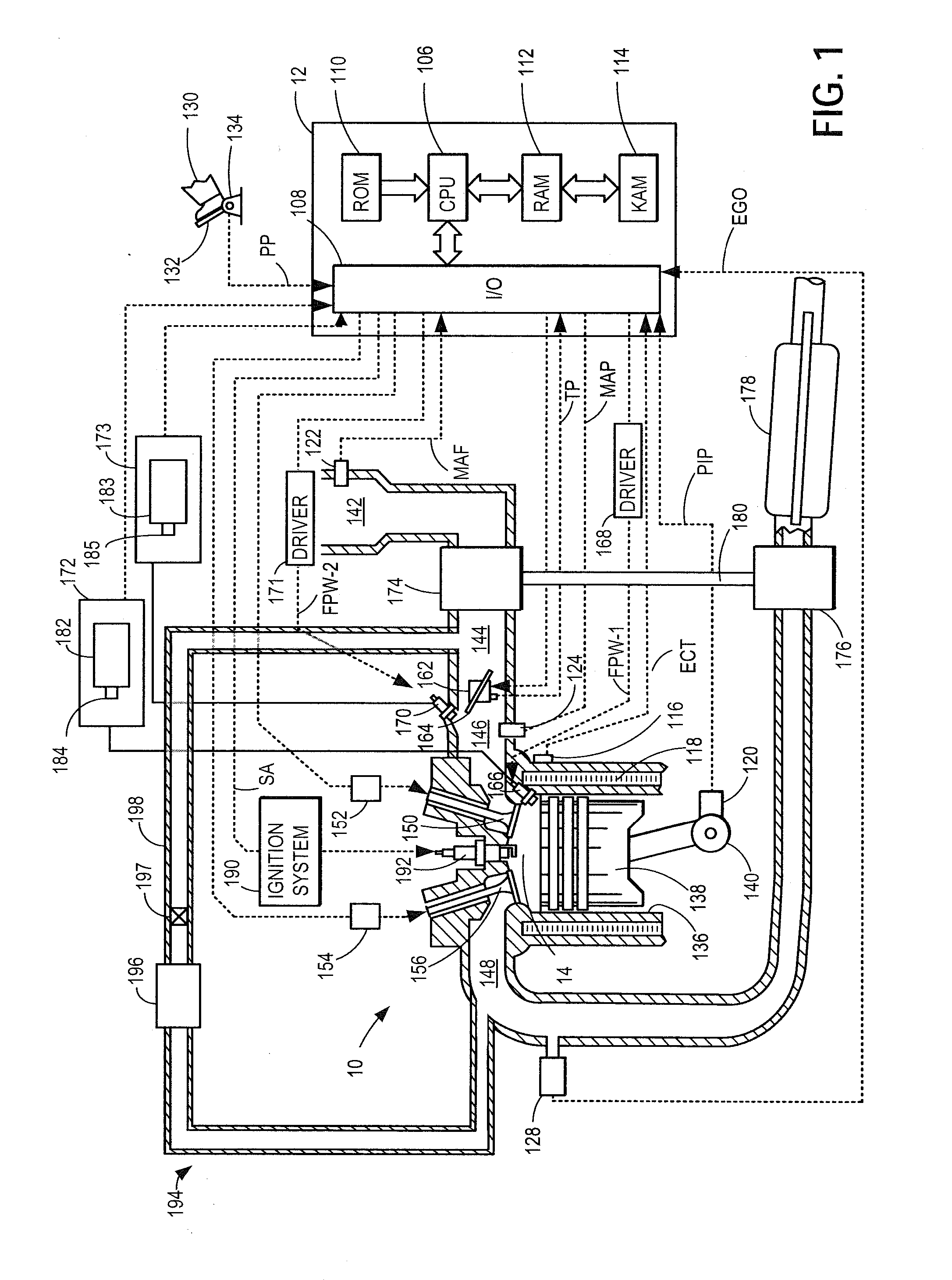Systems and methods for injecting gaseous fuel during an exhaust stroke to reduce turbo lag
a technology of gaseous fuel and turbo lag, which is applied in the direction of electric control, ignition automatic control, machines/engines, etc., can solve the problems of reducing the responsiveness of the vehicle, reducing the power supply of the engine, and lag in the turbo, so as to increase the power output of the engine, increase the speed of the compressor, and increase the boost
- Summary
- Abstract
- Description
- Claims
- Application Information
AI Technical Summary
Benefits of technology
Problems solved by technology
Method used
Image
Examples
Embodiment Construction
[0016]The present description relates to an engine system configured to deliver gaseous fuel. In one non-limiting example, the engine may be configured as part of the system illustrated in FIG. 1, wherein the engine includes at least one cylinder, a control system, and a turbocharger among other features. Turbocharged engines may experience turbo lag (that is, a delay before a turbine speed increases to a threshold speed to provide demanded torque output). A method for reducing turbo lag (shown at FIG. 2A) includes combusting a first fuel amount during a compression stroke of a cylinder combustion event, and subsequently combusting a second fuel amount during an exhaust stroke. Injecting and combusting a second amount of a fuel during an exhaust stroke may be referred to as post fuel injection. Post fuel injection and combustion may be adjusted based on engine operating conditions, including torque demand, as described at FIG. 3. When post fuel injections are not performed, the engi...
PUM
 Login to View More
Login to View More Abstract
Description
Claims
Application Information
 Login to View More
Login to View More - R&D
- Intellectual Property
- Life Sciences
- Materials
- Tech Scout
- Unparalleled Data Quality
- Higher Quality Content
- 60% Fewer Hallucinations
Browse by: Latest US Patents, China's latest patents, Technical Efficacy Thesaurus, Application Domain, Technology Topic, Popular Technical Reports.
© 2025 PatSnap. All rights reserved.Legal|Privacy policy|Modern Slavery Act Transparency Statement|Sitemap|About US| Contact US: help@patsnap.com



